

DIGITAL ISSUES. DMCA: The Digital Millennium Copyright Act. Introduction On October 12, 1998, Congress passed the Digital Millennium Copyright Act (DMCA).
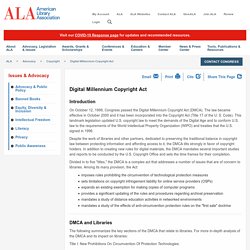
The law became effective in October 2000 and it has been incorporated into the Copyright Act (Title 17 of the U. S. What is Fair Use? What is Fair Use?
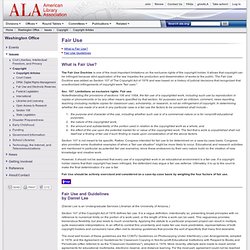
The Fair Use Doctrine is one of the most important limitations on the exclusive rights of the copyright holder. It allows that copyright can be infringed because strict application of the law impedes the production and dissemination of works to the public. Children's Internet Protection Act. The Children's Internet Protection Act (CIPA) was enacted by Congress in 2000 to address concerns about children's access to obscene or harmful content over the Internet.
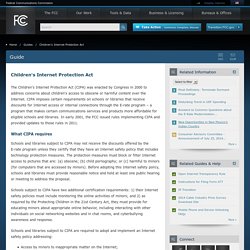
CIPA imposes certain requirements on schools or libraries that receive discounts for Internet access or internal connections through the E-rate program – a program that makes certain communications services and products more affordable for eligible schools and libraries. In early 2001, the FCC issued rules implementing CIPA and provided updates to those rules in 2011.
What CIPA requires Schools and libraries subject to CIPA may not receive the discounts offered by the E-rate program unless they certify that they have an Internet safety policy that includes technology protection measures. COPPA - Children's Online Privacy Protection. Anti-Piracy - SIIA: Software & Information Industry Association. The Software & Information Industry Association's Intellectual Property Protection Division conducts a comprehensive, industry-wide campaign to protect and enforce the intellectual property rights of participating software and content companies.

The pro-active campaign is premised on the notion that one must balance enforcement with education in order to be effective. Corporate Anti-Piracy ProgramSIIA pursues cases of software and content piracy taking place within an organization. This occurs when software has been installed or content is being copied and/or distributed by an organization without the proper license from the publisher. Those who report piracy taking place within an organization to SIIA may be eligible for a reward of up to $1 million. > Learn More. VID: Copyright. Cybersafety & Cybercitizenry - Spring ISD Library Resources.
iKeepSafe. Research has proved that K-12 students around the nation face specific online risks by engaging with their digital devices. iKeepSafe has documented all of these known offenses by gathering credible, academic research from: Cyber security professionals Media and digital literacy experts Media psychologists Law enforcement officers Public health professionals This includes research conducted by Rochester Institute of Technology that identified the offenses 40,000 New York students in grades K-12 experienced from wireless and internet connected devices.
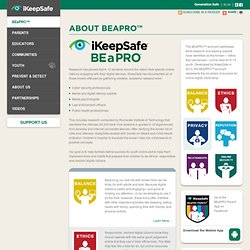
After verifying the known list of risks and offenses, iKeepSafe worked with Center on Media and Child Health at Boston Children’s hospital to translate the known risks into a framework of positive concepts. Bullying - Spring ISD Library Resources. Parent Guide to Internet Safety. Dear Parent: Our children are our nation’s most valuable asset.
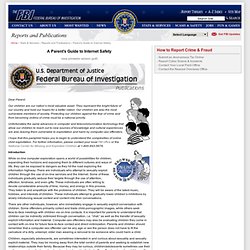
They represent the bright future of our country and hold our hopes for a better nation. Our children are also the most vulnerable members of society. Protecting our children against the fear of crime and from becoming victims of crime must be a national priority. I-SAFE - The Leaders in E-Safety Education. VID: Dangers of Sexting. The National Center for Missing & Exploited Children. Privacy.org - The Source for News, Information, and Action.
A Service of Albion.com. VID: Behaving Ethically Online. Baby 2.0 - A Digital Footprint. Complying with Federal Law Regarding Copyright and Intellectual Property - RMSLibrary. SISD staff and students are expected to comply with federal copyright laws.

Copyright law is different for different media: print, video, multimedia, etc. Assume that something is copyright protected even if it has no copyright symbol. The law does not require any copyright notice for something to be protected. Material on the Internet should be considered as protected by copyright law. Sometimes you will see a notice that says the material on a site is copyright free.
Creative commons sites have different types of licenses for use of materials on their sites. Congress created the Fair Use Guidelines for educators to allow some freedoms to use copyrighted materials in classrooms. What should we as students and staff do to comply? 1. 2. 3. ▶VID: A Shared Culture. Be CyberSmart!® Researching the Internet Wisely. Doug Johnson Website - Ethics. Resources for teaching information technology ethics to children and young adults Suggestions for additions to this page are always welcome.

My workshop handouts are here. ScenariosThis section contains links to a variety of scenarios of ethical and unethical technology use by students. The scenarios will include discussion questions and brief commentary. I would welcome real receiving real incidents from your experiences as a library media specialist, teacher or parent that would make good discussion starters. The complete list of scenarios and other resources can be found in my book, Learning Right from Wrong in the Digital Age: An Ethics Guide for Parents, Teachers, Librarians, and Others Who Care about Computer-Using Young People. Privacy Property aPproriate use 1. A selection of my published writings on ethical use issues. Wired Safety.
Nets Standards. Education technology standards to transform learning and teaching The time for major change in education is now.
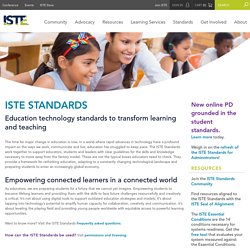
In a world where rapid advances in technology have a profound impact on the ways we work, communicate and live, education has struggled to keep pace. The ISTE Standards work together to support educators, students and leaders with clear guidelines for the skills and knowledge necessary to move away from the factory model. These are not the typical boxes educators need to check.
They provide a framework for rethinking education, adapting to a constantly changing technological landscape and preparing students to enter an increasingly global economy. Empowering connected learners in a connected world As educators, we are preparing students for a future that we cannot yet imagine.
Want to know more? How can the ISTE Standards be used? 21st Century Information Skills - Spring ISD Library Resources. Spring ISD Library Resources.